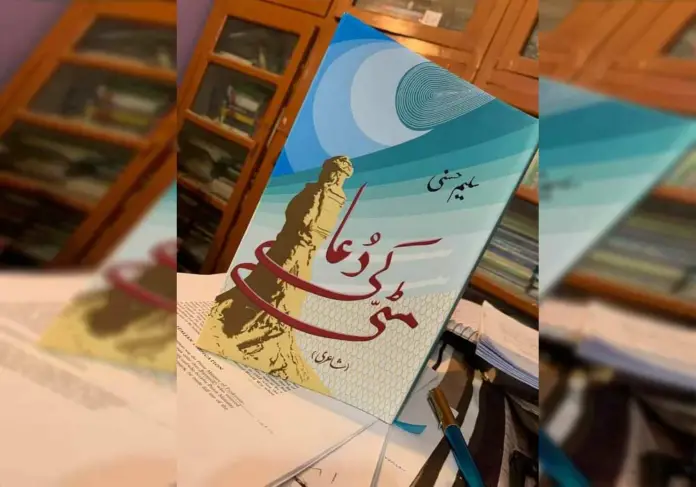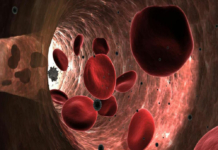Saleem Hasni’s Mitti Ki Dua is his debut poetry collection that I received a few weeks ago. Without any typical expression to appreciate, I would say that this collection kept me engaged for hours just because of its direct, simple and emotional strokes. The collection comprises of poems and ghazals, however, the variety of Hasni’s style in poems keeps the reader more alive. He belongs to Quetta so we can verily find his unique indigenous diction in his poetry. The use of indigenous words in the poem “Zarina” (p.16) makes us see the regional surroundings through poet’s eyes and sensations.
The element of simplicity has been my main attraction in Hasni’s poems as, to me, it is more than an achievement for a poet who can write such philosophical verses with the softest touch of a common man’s innocence. Unlike T. S. Eliot’s point of view, for me, it is not always a sign of being an impressive or successful artist/poet that he/she is merely pouring a certain load of verbosity and intellectuality in his work of art. Having experienced a difficult life with such deep sense of understanding present in Balochistan, Hasni has weaved a smooth emotional tapestry that slightly colours our thoughts with Balochi political threads but hits the hidden themetic target powerfully. Poems like “Khuda Sach Hai” can never be forgotten by the readers being the most impressive expression by the poet touched with stark realities as well as a refined romance.
Psychological aspects in a work of art have always been a great fascination for readers like me. They help us to interpret the unsaid and untouched parts and layers of human experiences mentioned in a certain work of art. Saleem has penned some poems with a marvellous experimentation that unearths the psychological sequel of Carl Jung’s collective unconscious. The unsaid archetype of pain can be seen in his poem “Be-Basi” (p. 51) wherein a connubial complex has been executed beautifully throughout generations. This concept slightly reminds me of Marquez’s One Hundred Years of Solitude, an unforgettable presentation in this context. Similarly, a poem “Hum Kahaani Mein Thay Hi Kahaan” (p. 30) holds some commendable verses while explaining Stockholm Syndrome.
The titles of certain poems also grasp our attention due to their diverseness. They are quite simple yet amuse us with their dual layers of symbolism. The poem “Saabiqa Mehbooba Se Humkinaari Kay Waqt” remains no more a personal experience for the poet when Hasni sets his ex-girlfriend’s persona as a tool to purify his own soul that has been contaminated with other impurifications i.e. social responsibilities. Almost all of our legendary Sufi Poets has been giving the same message of purification with the help of their mystical love experiences. This step, however, is preceded by a physical one as well in some of the poetic myths in Punjabi literature. The urge to forgive his ex-girlfriend to meet her with a new and a contemplated pure way and a wish to rebuild their mutual relationship construct; this poem is a sheer interesting subject for me. Hasni writes (p. 58)
“Yaad Kay Har Shehr Ko Masmaar Kar
Khwahishon Ki Aurat’on Ko Cheen Lay
Ajnabi Sab Khushbu’on Ko Cheen Lay”
Solitude seems Saleem’s hallmark throughout his collection. It is rather a different kind of fear that has primarily tasted world’s bitterness withal shallowness of intimate relations which makes him sit back with a conscious effort and a timid awareness. The expression of (p. 65)
“Jaise Ab Aana Nahi Ho Phir Kabhi
Aashiqui Ki Heraton Kay Darmayaan”
makes us see how an intended struggle is involved in the poet’s mind and feet to avoid, specifically, a life full of military adventures. He prefers a lonely corner in exchange of “Dhool, aatish, jung, ghurbat aur dukh” (p. 64) that gives a straight message of peace through art and poetry to the whole armed scenario in Balochistan and the rest affected areas present in our so-called ultra modern weaponized world.
Hasni has employed a number of new words that mark his diction and style as his very own. Words like Sateen, Muffler, Hush puppies, may not seem much aesthetic to some readers but the way, Hasni has employed them, stops us and demands a deserving appreciation of their contextual dexterity. They excavate the symbolic beauties in a quite refreshing way.
The subsequent quarter section of this collection comprises of ghazals that do not seem to follow the typical similar diction and themes of current famous ghazal writers in Urdu ghazal that again makes him a writer of his own experiences and observations. I would like to end this write up with Hasni’s emotive couplets:
“Muhabbat Aakhri Hai, Karne Wala
Bass Iss Kay Baad Sab Achha Karay Ga
Mai Uss Kay Paas Ja Kar Ro Para Hon
Woh Mujh Se Door Ja Kar Kya Kare Ga
Hamara Naqsh Lamha Bharr Hai Lekin
Yeh Lamha Deir Tak Peecha Karay Ga”







